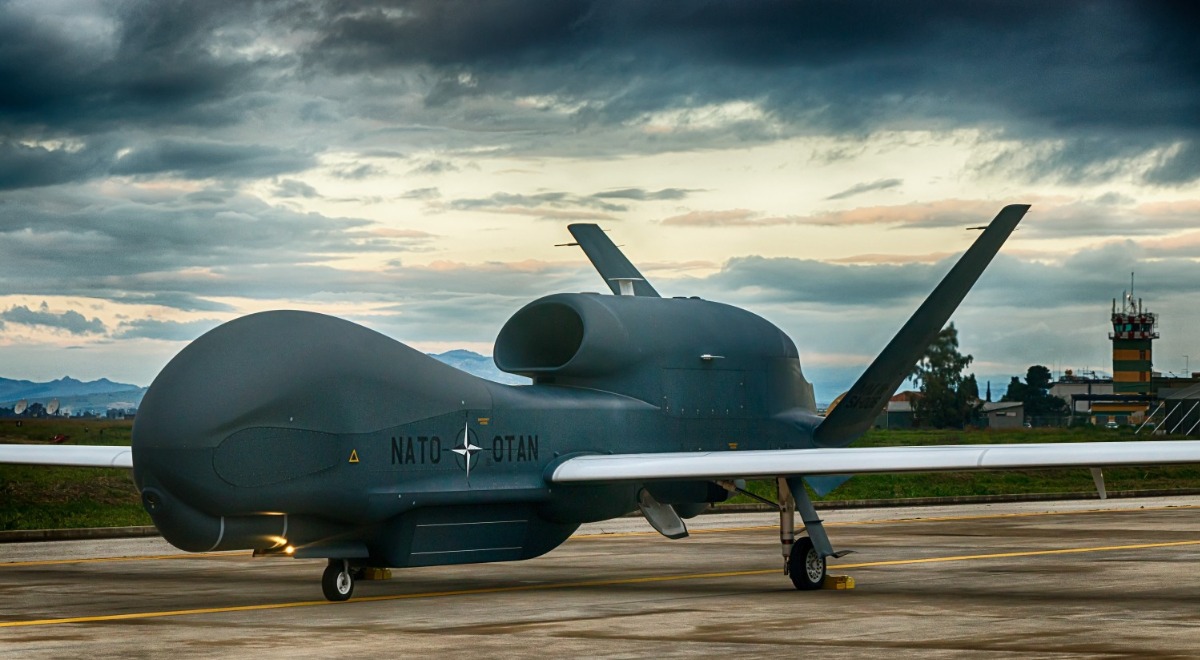Click Here to View This Page on Production Frontend
Click Here to Export Node Content
Click Here to View Printer-Friendly Version (Raw Backend)
Note: front-end display has links to styled print versions.
Content Node ID: 403734
NATO’s fleet of five Northrop Grumman RQ-4D Phoenix high-altitude long-endurance remotely piloted aircraft (HALE RPAs) are ready to begin initial operations. The announcement was made on February 15 by NATO’s Supreme Allied Commander Europe (SACEUR), General Tod Wolters, at the organization’s SHAPE headquarters in Mons, Belgium.
“The declaration of Initial Operational Capability is an important milestone for NATO’s Alliance Ground Surveillance [AGS] Force and for the alliance as a whole,” said Major General Phillip Stewart, SHAPE Strategic Employment Directorate Commander. “This unique, multinational capability, paired with a team of Allied specialists who process, evaluate, and distribute intelligence, provides NATO decision-makers with timely and relevant information.”
Although original plans called for eight RQ-4 RPAs to be acquired for the AGS program, five were ordered in May 2012 with funding from 15 of the alliance’s members. Northrop Grumman is the prime contractor but is partnered with companies from the funding nations, including Leonardo (Italy), Airbus (Germany), and Kongsberg (Norway).
The RQ-4D Phoenix version for NATO is based on the U.S. Air Force’s RQ-4B Block 40, and its primary sensor is the Northrop Grumman Multi-Platform Radar Technology Insertion Program (MP-RTIP) radar, which was initially tested on the Scaled Composites Proteus manned testbed. The radar has an active electronically-scanned array and was developed from the APY-8 radar carried by the Boeing E-8 JSTARS. It operates in wide-area moving target indication, fixed target indication, and synthetic aperture radar modes to provide a wide-area picture of land vehicles and positions for intelligence, battlefield command and control, and targeting requirements.

First flight for the RQ-4D occurred in December 2015 and, following testing in the U.S., Northrop Grumman delivered the first Phoenix to the main operating base at Sigonella, near Catania on the Italian island of Sicily, in November 2019. The fifth and last arrived a year later. The first mission flown by a NATO AGS Force (NAGSF) crew was conducted on June 4, 2020.
Intelligence that is gathered by the Phoenix RPAs is available to all 30 NATO member nations. Germany and Italy, along with the U.S, have been the main drivers behind the creation of the NAGSF, and the RPAs have been certificated in Italy and are allocated Italian air force serials.
Concerns have been voiced in some German quarters over airspace sharing as a result of the nation's own issues with the RQ-4E EuroHawk signals intelligence version, which had been selected to replace the German navy’s elderly “Peace Peek” manned Sigint platforms, which were modified Dassault Atlantic maritime patrollers. Despite the delivery of one RQ-4E to Germany from a requirement of five, that program was canceled in 2013 as a result of airspace regulation and flight control system issues.